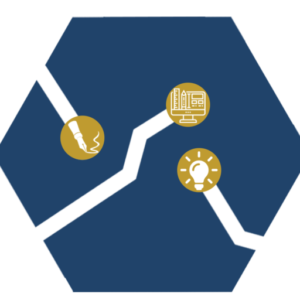In today’s business world, time and resources move at a breakneck speed, especially in enterprise learning. Employers have prioritized staying current in industry trends, often resulting in ineffective training. Keeping your employees abreast of new initiatives via long emails or dry e-learning is often not enough and can disconnect your employees from the material. To effectively train your employees, they must be engaged in a way that allows them to learn in a manner that best suits them. The flipped classroom model has the potential to solve these issues and captivate employees.
What is enterprise learning?
Simply stated, enterprise learning refers to the training strategy of an organization that involves employees, partners, and customers. The goal of enterprise learning is to provide a holistic training program that maximizes learning outcomes.
What is the flipped classroom model?
What exactly is the flipped classroom model? To understand its innovative nature, you need to start understanding how traditional learning is defined in the educational community.
Traditional learning
Traditional learning involves a teacher lecturing a group of students. In the business sector, this looks like a manager lecturing Customer Service Representatives on customer service tactics, like empathy or bridging statements. Traditional learning with a modern twist could entail a Subject Matter Expert leading a webinar on how to use a new Intranet system. Experts have nicknamed this type of learning “sage on the stage” model because it involves an expert disseminating knowledge to the class or team.
Flipped classroom
A flipped classroom model, on the other hand, encourages student participation and small group exercises. In this learning model, a student may read the textbook or watch an instructional video prior to attending the class. Instructors would create a learning exercise or experience for students and step back from direct instruction while remaining available for questions if the student runs into any roadblocks. Its hands-on nature sets this method apart. While the traditional model can be described as the “sage on the stage,” the flipped classroom model contrasts this learning approach by being more of a “guide on the side” model.
Examples
In the financial sector, this flipped classroom model could look like a trainer creating and assigning mock loans in the loan management software to new hires. The new hires would then get the opportunity to go through the loan authorization process firsthand, instead of just hearing about the process from the trainer. It could also look like a manager giving a new technical writer free rein to compose their own draft of a Desktop Procedure document. In the end, the flipped classroom model requires more activity in the learning process.

Why is this model so engaging?
The traditional learning model of a lecture serves as little more than a brain dump. The instructor stands in front of a classroom and gives the lesson. The limited time left over once the lecture is over is devoted to discussion. This method relegates practice to outside the classroom environment. As a result, your employees may leave feeling ill-prepared for the practical application of their training. The key to effective training is engaging your employees in a way that allows them to learn in a manner that best suits them.
Flipped v. traditional
The flipped classroom model can be useful in engaging your employees on a higher level. It allows them to learn at their own speed while promoting collaboration. The lecture portion of the model takes place outside the classroom, and often online. This model enables the learner to consume the information in a manner most comfortable to them. When the learner gets to the classroom, they already have been exposed to the material. The instructor focuses on facilitating discussion and collaboration. Additionally, the model allows learners to practice the new tool or process. The learners leave the session with more confidence and better retention.
Traditional methods often don’t allow the learner to digest content in a manner that most suits them. This shortcoming can not only lead to a lack of confidence in future training initiatives but also poor overall engagement. A lack of confidence may also cause problems in the adoption of the new process or tool, such as employees who make mistakes because they do not understand how to do parts of their job. Learning deficiencies can create setbacks that your business can ill afford.
Conclusion
When a learner can figure out how to do a task firsthand, they have more investment in their learning journey and may be further incentivized to retain the new information. A flipped classroom model empowers learners. Learners can choose the direction a course moves in. By speaking up and making it clear to the trainer what areas they feel comfortable in, and what areas they are confused about or need more instruction in, a trainer can better customize the training session to suit their audience and make the session more effective. Active learning leads to confident employees and exceptional client relationships.
For more information on how MATC Group can innovate your training processes, contact us today!
Related Blogs
Instructional Design and ADDIE: An Overview
6 Questions to Ask as You Develop a Training Course
The Importance of Using Bloom’s Taxonomy when Creating eLearning Courses



